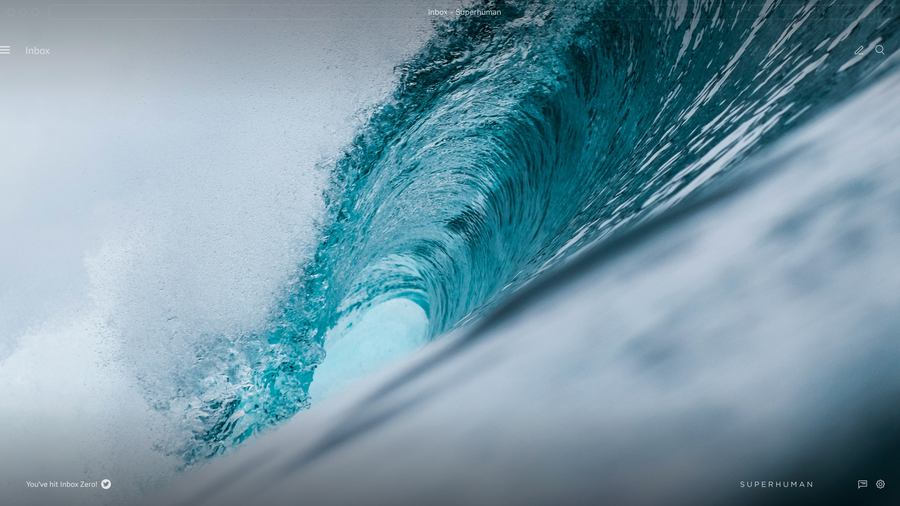
When it comes to managing our email, there are 2 types of people.
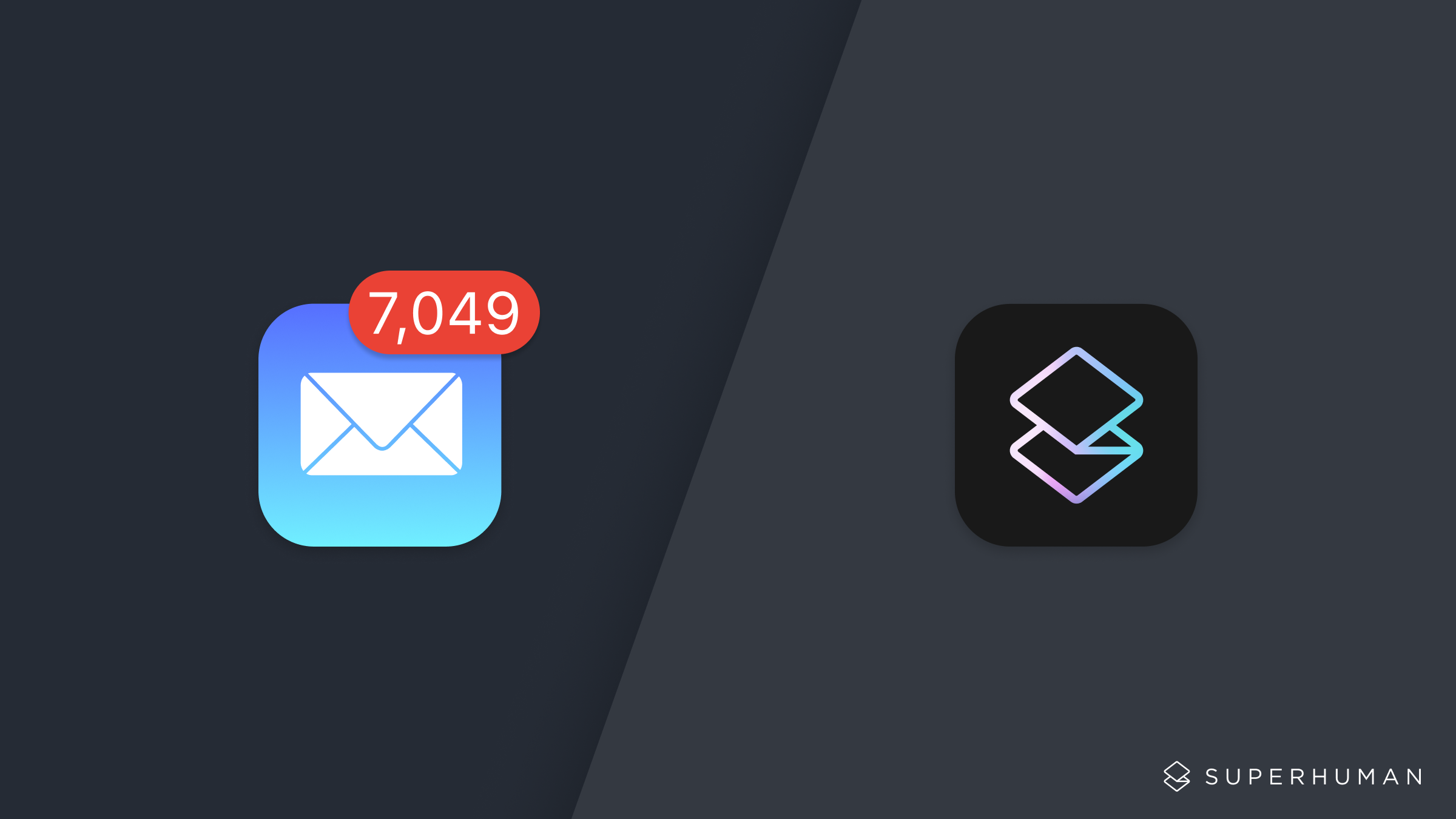
Some people keep their inboxes organized and tidy. Others let hundreds (or even thousands) of emails sit unread each day. These opposing email management styles have created 2 distinct methods: Inbox Zero vs Inbox Infinity.
Which approach is the best? Let's compare Inbox Zero and Inbox Infinity — and discover which will make you less distracted and more productive, while never missing important emails again.
Inbox Zero vs Inbox Infinity: what's the difference?
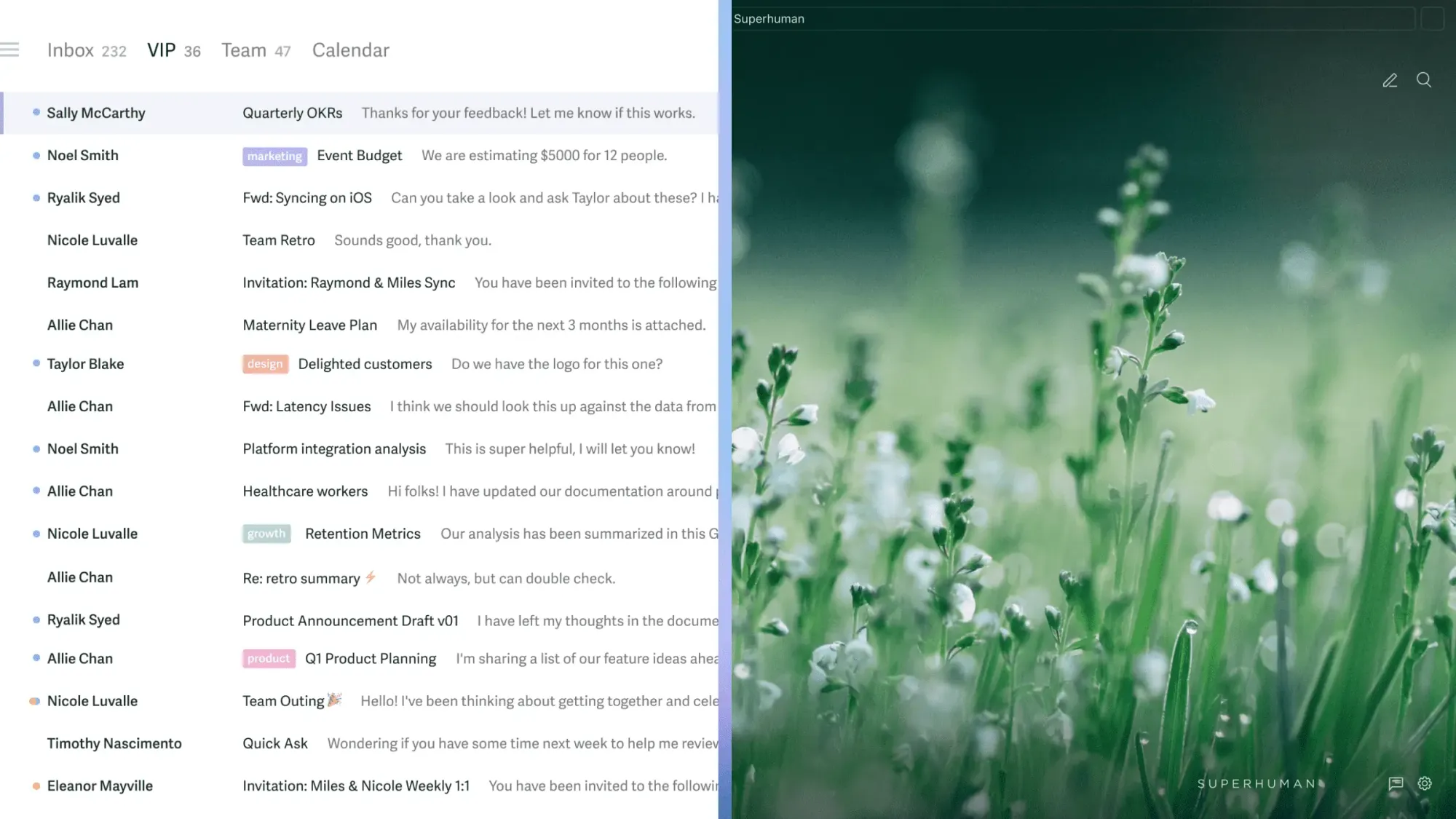
What is Inbox Zero?
Inbox Zero seeks to keep your inbox empty — or as close to empty as possible — at all times. The "Zero" refers to both the number of emails you should aim to have in your inbox, and "the amount of time an employee's brain is in his inbox," according to Inbox Zero's creator, productivity expert Merlin Mann.
Mann created Inbox Zero in the early 2000s, and admitted in a Google Tech Talk that he created this method to address his own struggles with email overload, notifications, and distractions.
Today, Inbox Zero has become both a buzzword in tech and entrepreneurial circles, and a popular set of strategies people can use to triage and empty their email inbox every day — releasing themselves from the distractions of having a disorganized, overflowing inbox.
What is Inbox Infinity?
On the opposite end of the spectrum, we have Inbox Infinity.
Taylor Lorenz is widely credited with coining the term in an article she wrote for The Atlantic in early 2019. After explaining that she receives hundreds of emails each day, and that daily global emails sent and received — already in the hundreds of billions — were on track to increase nearly 25% in just a few years, Lorenz introduced her concept of "Inbox Infinity".
"In 2019, I suggest you let it all go," she wrote. "There is simply no way for anyone with a full-time job and multiple inboxes to keep up with the current email climate. Even after deleting and sorting my 2,700 unread messages, I awoke the next day to more than 400+ more."
Lorenz continued: "Adopting inbox infinity means accepting the fact that there will be an endless, growing amount of email in your inbox every day, most of which you will never address or even see. It's about letting email messages wash over you, responding to the ones you can, but ignoring most."
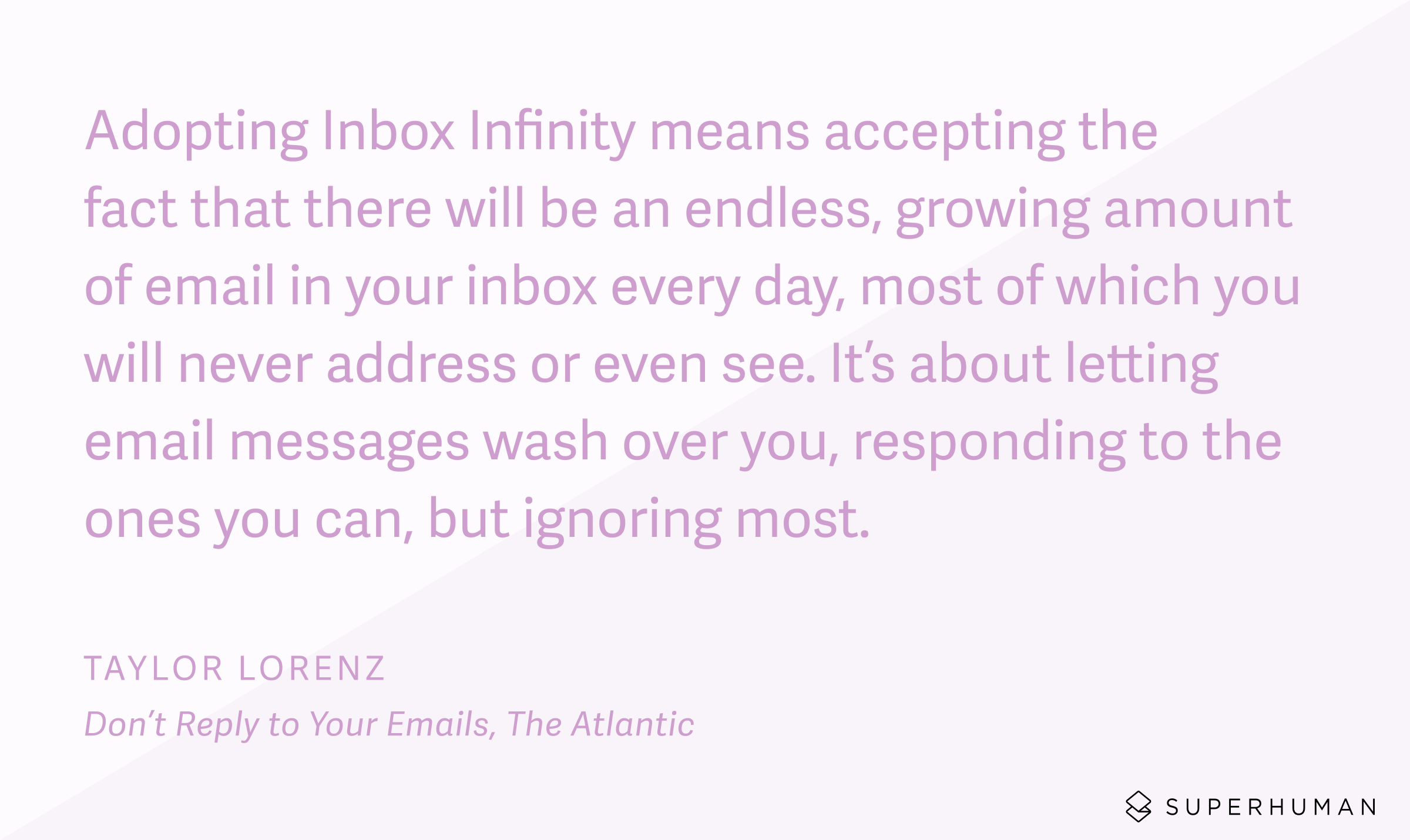
Lorenz said she reached out to close contacts and family members to let them know that her personal email might not be a good way to get in touch with her, and then set an auto-responder to let others know that she may not respond to — or even read — their work email.
"Since setting up my out-of-office responder on my personal inbox and adopting inbox infinity, I've felt my stress about opening my mailbox decrease," she wrote. "I've also found that setting the expectation that I may never see or reply to an email makes people more grateful when they do get a response. I've even started sending fewer emails, a consequence of spending less time in my inbox."
Lorenz admits that she might miss communication that comes via email. She also admits that that's the biggest risk of Inbox Infinity — that a missed email could result in a missed deadline, or worse. But she says accepting that risk makes her more productive because she now relies less on email.
Lorenz's essay was just the beginning. From there, Inbox Infinity took off — soon, NPR was publishing step-by-step guides to practicing Inbox Infinity, Bustle was lauding it as a "lifestyle hack", and productivity writers across the web were claiming that Inbox Infinity brought them to a place of "zen" when it came to email overload.
Are Inbox Zero and Inbox Infinity the only answers?
Email management is not a binary, and most people will probably fall naturally somewhere in the middle of these 2 approaches.
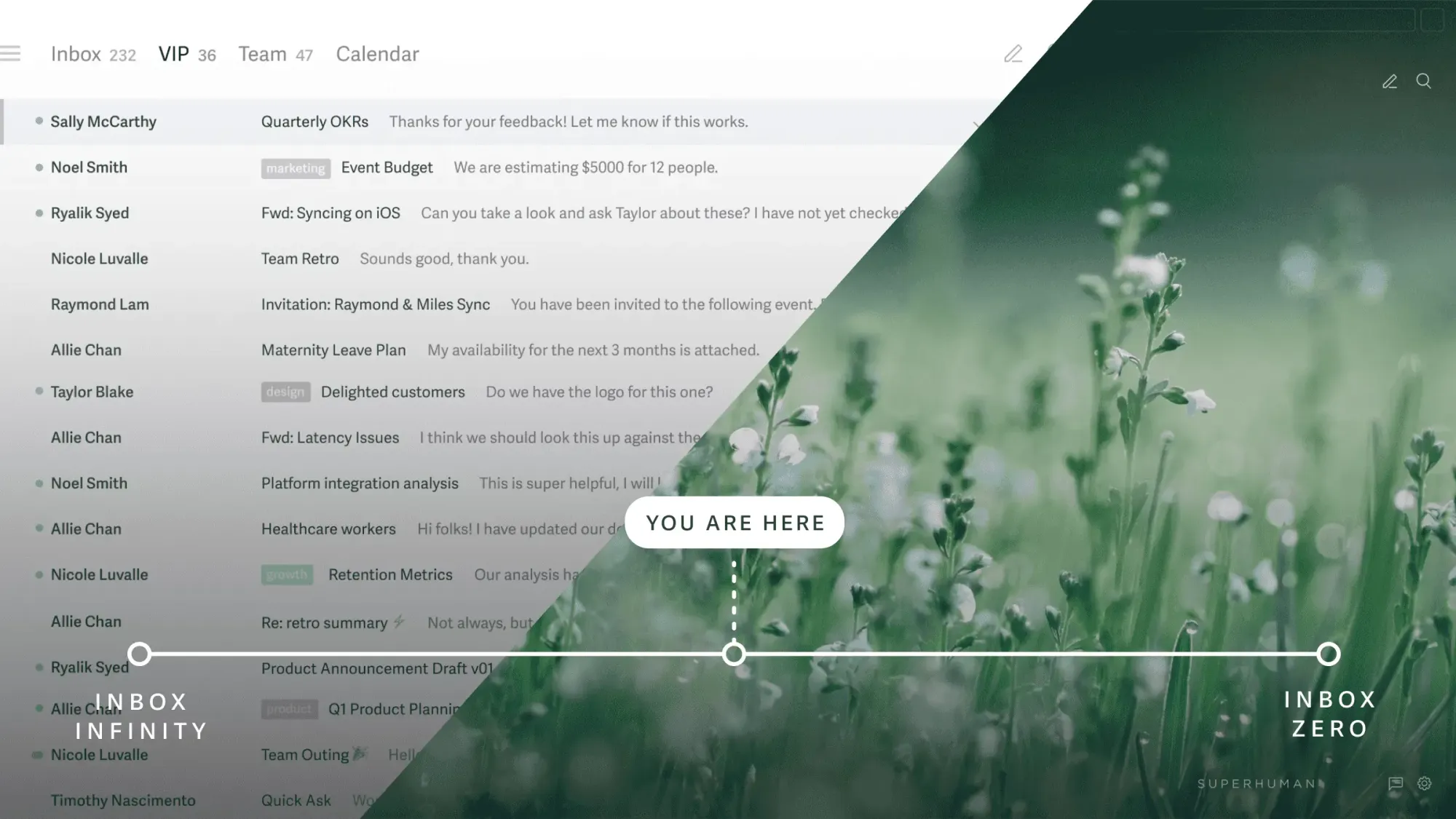
Some people receive a lot of email, but don't practice Inbox Infinity. After all, Inbox Infinity isn't about the volume of email you receive, it's about your attitude toward email: that it's unmanageable and not worth your time or effort to even try.
On the other hand, some people have well-organized email inboxes, but don't practice Inbox Zero (yet). Inbox Zero is powerful because it can build upon any existing email management and organization techniques you use — or it can help bring you back from the chaos of Inbox Infinity. Because, at the end of the day, only one of these is really a system for managing your email…
Inbox Zero vs Inbox Infinity: which is better?
Inbox Infinity isn't email management. If anything, it's the absence of email management. It's giving up on email management.
For most of us, that just isn't feasible. Email is an essential communication tool, both for work and our personal lives.
Here's another example: you couldn't just tell your team that you're now practicing "Meeting Infinity", and you will go to meetings if you happen to remember, but will skip most of them! That's not fair to your team, who rely on you to show up.
Tech blogger Karl Voit puts it well: "The fact that Inbox Zero doesn't work for some people because of sheer email amount is an indicator that they do have other issues which need to be fixed. In my opinion, Inbox Zero should always be a viable method. If not, email in general does not work (any more) for those people."
No matter which approach you choose, we can all benefit from increased responsiveness to the people and teams who count on us. That's why Superhuman exists. No matter how much email is in your inbox, you can regain control — if you have the right tool and the right help.
How do we know? We've helped people with millions of emails get to Zero!
Get started with SuperhumanHow to go from Inbox Infinity to Inbox Zero
Whether you already use an email management system, you've fallen into the trap of Inbox Infinity, or you're somewhere in between, Superhuman is the key to getting to — and staying at — Inbox Zero.
No matter how many emails you start with, Superhuman can help you reach an empty inbox in just a few steps. Here's how…
Step 1: Triage your inbox
You need to triage your email — particularly if you're starting with an overflowing inbox. Superhuman's Split Inbox allows you to separate work streams into different inboxes. Then, you can focus on your most important messages, and process the rest later.
Step 2: Clear out undesirable messages
Maintaining Inbox Zero means you can start from a clean slate — and Superhuman's Unsubscribe, Block, and Select All From Here tools can get you there.
With just a few commands, you can clear out all newsletter subscriptions, marketing emails, automated messages, and old emails. One Superhuman customer cleared out 2,264,203 conversations in a single step!

Step 3: Defer messages that need a follow-up
If you're left with messages that require action, but later, use Superhuman's Remind Me. Set reminders as soon as you send emails, and you'll never miss a follow-up again.
Step 4: Process new email
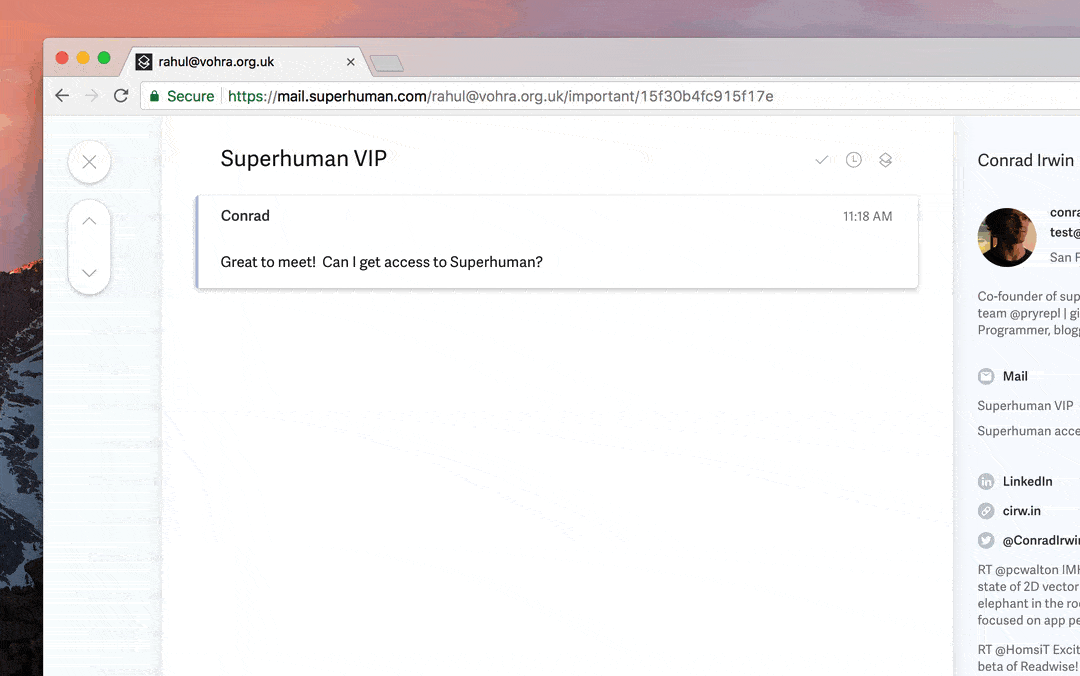
Finally, once your inbox is down to only the newest and most important messages, tools like Instant Intro and Snippets help you get through email twice as fast. That's why we built Superhuman — because no one should miss important emails, but everyone should spend less time in their inbox.
Get started with SuperhumanReady to reach Inbox Zero?
Even if you're currently at Inbox Infinity, you can reach Inbox Zero. Every new Superhuman customer thinks their inbox is the most chaotic we've ever seen — which makes them all the more delighted when we help them reach Inbox Zero.
Inbox Zero is only a 30-minute coaching session away. Join Superhuman!




